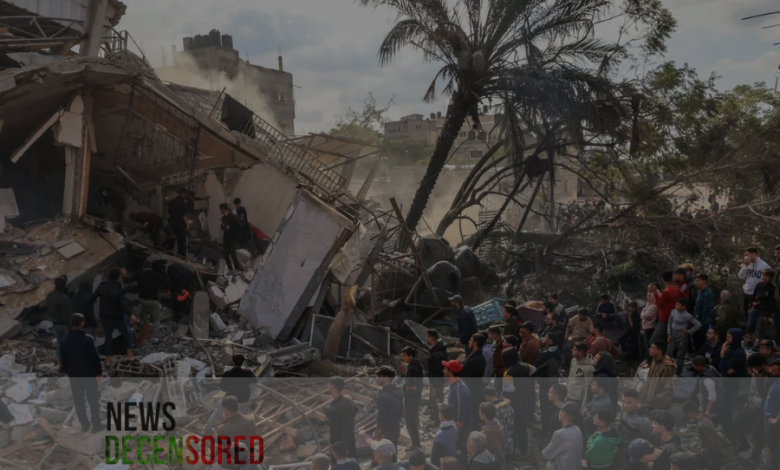Israel’s Gaza war producing alarming carbon emissions

The Israeli-Gaza conflict has recently been shown to have enormous environmental consequences in terms of carbon emissions. One study, “A Multitemporal Snapshot of Greenhouse Gas Emissions from the Israel-Gaza Conflict,” revealed that the first 120 days produced emissions higher than the annual emissions of 26 individual countries. The study identifies the various ways the conflict contributed to GHG emissions, indicating the politics of the overlooked environmental costs of war.
Direct Emissions from Military Operations:
Since this was the start of the conflict, many military activities characterized the early period. These included bombing raids, reconnaissance missions through flight, and rocket attacks. These operations have contributed to massive carbon emissions. For instance, fuel consumption includes aircraft, tanks, and other military vehicles that have been in operation for long. Research estimates that these activities emitted enough in the first 120 days to transcend many countries’ yearly emissions. Further, the demolitions of infrastructure in Gaza generated a tremendous amount of debris, thus compounding the matter in terms of its environmental impact.
The Impact of Infrastructural Destruction and Rebuilding:
It is estimated that the conflict has created around 23 million tonnes of rubble in Gaza. Rebuilding this infrastructure will likely involve CO2e emissions of 60 million tonnes of CO2 equivalent. This figure is equivalent to the total annual emissions of countries like Sweden and Portugal. Chances are that a considerable quantum of carbon-intensive activities will be associated with clearing the rubble and rebuilding the buildings by producing and transporting large quantities of building materials like concrete.
Contributions of Pre-War and Wartime Building:
Before and during the conflict, both Israel and Hamas engaged in massive construction activities that generated carbon emissions. Hamas’s construction of a 500 km network of tunnels and Israel’s fortification of the ‘Iron Wall’ defense system are significant contributors to these emissions. Added to the emissions from military operations, these activities give a larger-than-life record of the conflict’s environmental impact.
Role of International Military Support:
Some carbon emissions were also from international actors, particularly the United States. Early in the fighting, around half stemmed from Israeli military supplies being moved around by cargo planes belonging to the U.S. This proves that it will not be an exclusively local phenomenon since the military logistics and support operations are enormous contributors to carbon emissions.
Call for Mandatory Military Emissions Reporting:
The study, therefore, calls for mandatory reporting of military emissions through international frameworks, such as the UN Framework Convention on Climate Change. No military is under any legal mandate to disclose its carbon emissions, which means that the actual environmental cost of conflicts usually goes unreported. Researchers say a better understanding of the climate impact of military activities calls for increased accountability and transparency.
The environmental toll of the wars between Israel and Gaza stands in bright light, reminding us that, indeed, one of the most ignored components of war is the environment. Large military operations, massive infrastructure, and reconstruction-related carbon emissions put front and center the rising need for monitoring and reporting of military-related emissions. At all costs, these emissions should be addressed for short-term consideration for environmental health and long-term global climate goals.
Therefore, this suggests that there is a call for understanding the interface between conflict and climate change so that local and international players can consider potential environmental implications in responding to military conflicts.




